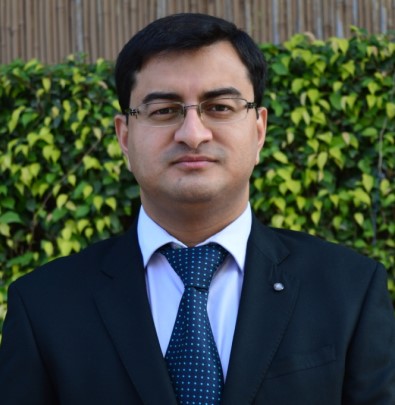Is India Ready to Phase-out Subsidised Kerosene?
 by Ritesh Rautela and Vijay Ravi
by Ritesh Rautela and Vijay Ravi Jan 5, 2018
Jan 5, 2018 5 min
5 min
This blog discussed possibilities regarding how India can phase out kerosesne subsidy.
Kerosene is a distillate petroleum product that serves as a primary source of fuel for lighting and also used to start the wood or cow dung-fired stoves used for cooking by poor and marginal households in India. Subsidised kerosene is distributed to eligible beneficiaries through a network of agent-appointed Fair Price Shops (FPSs). The price of subsidised kerosene and entitlement varies between INR 16–18 (USD 0.25–0.28) and 1.5–6 litres per household respectively. The subsidy budget for kerosene is at INR 8,000 crore (USD 1.23 billion). This is far less than the food subsidy at INR 145,338 crore (USD 22.36 billion). The government manages both food and kerosene subsidy at the same scale by managing the distribution through FPSs. Hence, it is administratively and economically difficult to manage this important yet comparatively small subsidy programme at a scale similar to the food subsidy.
Moreover, critics of the kerosene subsidy argue that kerosene is a heavily polluting fuel and 41% of the kerosene being subsidised for domestic purposes is diverted for commercial use. Now, the Government of India has asked oil marketing companies (OMCs) to keep raising the prices of subsidised kerosene by INR 0.25 (USD 0.004) every fortnight until the subsidy is eliminated, or until further orders. While the arguments against kerosene are not without merit, the decision to (or hope to) rationalise its use by increasing price or phase out kerosene needs careful examination.
As a first step towards improving the management of the existing kerosene distribution system, the Government of India encouraged states to adopt Direct Benefit Transfer (DBT) in kerosene. This draws on the recent success of DBT in liquefied petroleum gas (LPG). Jharkhand was the only state that agreed to pilot-test the scheme, which was carried out in four districts – Chatra, Hazaribagh, Khunti, and Jamtara.
 DBT in kerosene is a conditional cash transfer programme under which beneficiaries buy kerosene at a non-subsidised price from an FPS, using biometric authentication. The government then transfers an amount equal to their expenditure on subsidy directly into the bank account of eligible beneficiaries. For instance, in Jharkhand, non-subsidised kerosene is available at approximately INR 28 (USD 0.43) per litre at FPSs. The government transfers a subsidy amount of INR 10 (USD 0.15) per litre to the bank account of eligible beneficiaries who have made a purchase.
DBT in kerosene is a conditional cash transfer programme under which beneficiaries buy kerosene at a non-subsidised price from an FPS, using biometric authentication. The government then transfers an amount equal to their expenditure on subsidy directly into the bank account of eligible beneficiaries. For instance, in Jharkhand, non-subsidised kerosene is available at approximately INR 28 (USD 0.43) per litre at FPSs. The government transfers a subsidy amount of INR 10 (USD 0.15) per litre to the bank account of eligible beneficiaries who have made a purchase.
Another option, which perhaps seems more likely, is to completely phase out subsidised kerosene. This has been done in Haryana and Delhi. This note analyses the feasibility of alternative options to replace kerosene for lighting and cooking.
Alternatives for Lighting: The first alternative for lighting is electrification. While most of rural India is classified as “electrified”, this does not paint a true picture of the on-the-ground reality. According to a National Sample Survey Organisation (NSSO) survey, 26.5% of rural households still use kerosene as their primary source for lighting. The dependence on kerosene for lighting is very high in the rural parts of Bihar and Uttar Pradesh at 73.5% and 58.5% respectively. A village is considered electrified if the basic infrastructure to access electricity has been set up, and 10% of households have access to the electricity grid. Thus, 90% of households may not even have access to electricity in an “electrified” village.
A term called “intensive electrification” has been coined to define access to electricity in a better way. A village is considered “intensively electrified” when access to electricity is provided to 100% of households. 72% of villages in India are “intensively electrified” as compared to the 98.7% villages that are “electrified”. We must understand that even for households that are connected to the grid in an intensively electrified village, power cuts at critical hours are common – for instance, between 7 pm and 10 pm, when children study or dinner is being prepared. It seems electricity is a long way from meeting the lighting needs of rural households.
The new Saubhagya scheme is a step in the right direction. It aims to provide electricity connections to over 40 million households in rural and urban areas by December 2018. However, this will only solve the problem of access. The problem of availability and reliability of electricity may still remain because of the weak financial situation of electricity distribution companies and the high costs they face to supply to rural areas.
The second alternative for lighting is solar lamps. As a solution for lighting, solar lamps suffer from two problems. The first is the initial cost barrier. An INR 1,200 (USD 18) solar lamp is not something that many can afford. The second is the problem of maintenance, as service is not easily available nearby if and when an issue arises. Even if solar lamps are provided with easy financing options, one or two sources of light are insufficient for a rural household where children are studying, women are cooking, men socialising, and someone needs to visit the washroom. So poor households will need several solar lamps to meet these diverse needs effectively.
Thus, it seems that even if a rural household is connected to the grid or has solar lamps, people may still have to depend on kerosene to fulfil many of their lighting needs. The situation may not improve unless access, availability and reliability of the grid supply improves or the cost barrier and maintenance issues of solar power are addressed.
Alternatives for Cooking: Another use of kerosene is for cooking purposes. According to the NSSO survey 2011-12, less than 1% of households in rural areas use kerosene as cooking fuel. Kerosene is used only to ignite cooking fuels, such as firewood and dung-cake. In addition, only 5.7% of urban households use kerosene as primary cooking fuel. The alternative for cooking is LPG stoves. The Ministry of Petroleum and Natural Gas (MoPNG), Government of India, has been doing a commendable job to break the initial access barrier through its Pradhan Mantri Ujjwala Yojana (PMUY). We believe that as the scheme evolves to provide universal access, kerosene will no longer be needed for cooking. However, the government should ensure PMUY access before phasing out kerosene subsidy in order to avoid causing inconvenience to people who rely on the fuel.
 Households also use kerosene to run irrigation pumps. However, using subsidised kerosene to run irrigation pumps is against the spirit of the subsidy. Yet an increase in the price of kerosene or phasing out kerosene from the market is sure to have an adverse effect on the agricultural sector. A discussion of the impacts is beyond the scope of this paper but it is something policymakers may want to consider.
Households also use kerosene to run irrigation pumps. However, using subsidised kerosene to run irrigation pumps is against the spirit of the subsidy. Yet an increase in the price of kerosene or phasing out kerosene from the market is sure to have an adverse effect on the agricultural sector. A discussion of the impacts is beyond the scope of this paper but it is something policymakers may want to consider.
Conclusion: It is evident that kerosene is far from losing its status as an essential commodity in rural India. While phasing out kerosene is possible, and should be done, the government needs to ensure that the plan to do so is communicated well in advance. It should also make facilities and infrastructure available to beneficiaries to enable an easier shift to alternatives. Otherwise, the government risks pushing a very vulnerable section of society back into the age of darkness.
Written by

Ritesh Rautela
Associate Partner
Leave comments